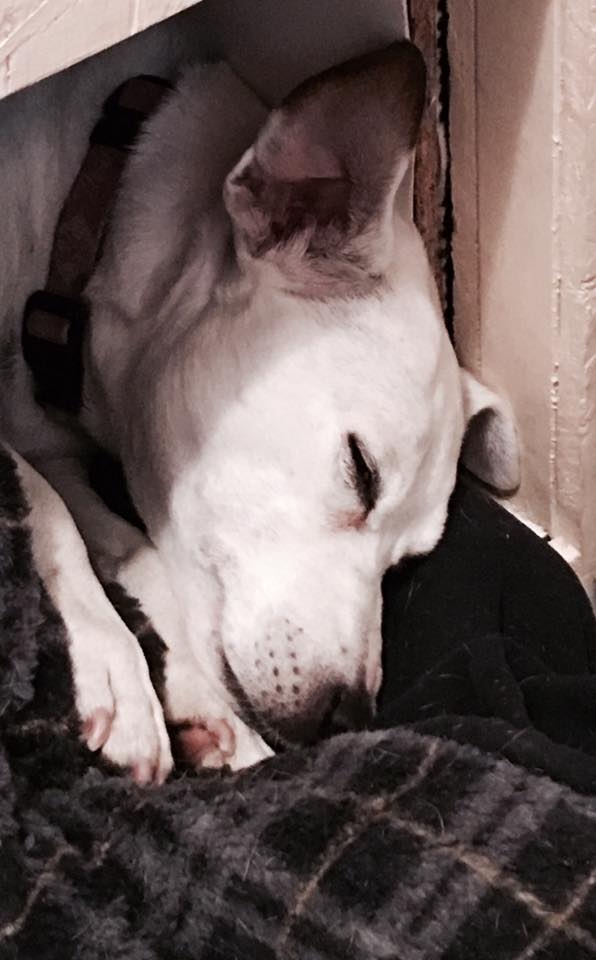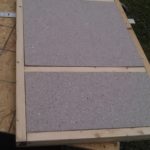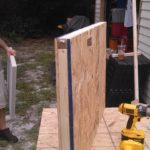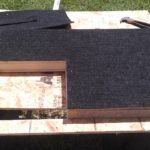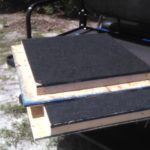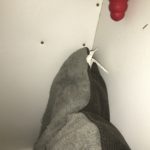Disclaimer: I am not a veterinarian. I work with dogs who are fearful of storms, fireworks, gunshots, and other loud noises. Sileo is a medication that must be prescribed by your veterinarian. They will be able to help you determine if it is the right medication for your pet. The information contained in this video is to help you teach your dog to accept having Sileo placed on his gum line.
Category: Noise Phobia
Should You Pet Your Dog During Thunderstorms?
“Don’t pet your dog during a thunderstorm, it will only make him worse.”

Yes Tic Tac you are correct, this statement is simply not true but you don’t have to stick your tongue out and be rude to our readers. There is only one way that could be true for your dog, and that is if he doesn’t find petting enjoyable. I’ll admit, there are dogs that don’t nuzzle into your hand, rollover so you can give them a good belly rub, or do that little kick or strange grin when you find just the right spot. But, for most pet owners petting is very enjoyable for your dog.
I’ve discussed this before in another blog post which can be found here, but counter (classical) conditioning is when you pair something the dog likes (typically food, we’ll call this the “good thing”) with something the dog has a negative association with (we’ll call this the “bad thing”) in order to change his association with the bad thing. Some of the best advice you’ll hear or read about is to have a treat party when the thunder goes boom. When done consistently after several trials (and that could mean 100s of times depending on the dog’s level of fear and value of the “good thing”), instead of pacing and panting, the dog goes “come on sky go boom… I want me some cat food pate.” (In case you don’t know me by now, I tend to put words in dogs’ mouths… this is called anthropomorphism.)
So… if dog’s like petting and we pet them during a thunderstorm wouldn’t it make sense that we are actually using counter (classical) conditioning?
Here’s the thing, we can only feed in response to a stimuli we know exists. This is why we most often feed when we hear the thunder. But, for many dogs the fear-related behavior begins before we even know the storm is on its way unless you are glued to Accuweather (or some other weather service). Next week, I will be discussing some key benefits of using Accuweather or another similar service to help our dogs. To make sure you don’t miss it, subscribe to our blog post updates here.
The Value of The Good Thing Matters
Now, in case you missed it… the value of the “good thing” matters! Depending on your dog, you may be able to belly rub your dog to a better feeling about thunderstorms, but don’t think that will be enough to change the bad thing to a good thing. It’s a great start for when the wind begins to bring the clouds in, but you’ll be better off using something really valuable like “super stinky cat food pate” in a tube when the thunder gets to booming. I wish I could tell you exactly what to use, when to use it, and how many times to use it, but just like you, your dog is an individual. My dog thinks the sun rises and sets in baby carrots. So I might very well be able to use carrots for the boom, but if I try that with most dogs they aren’t going to give one sniff to that little orange thing in my hand when the sky sounds like its going to fall right into the middle of their living room.
Hire a Professional
This is where a good behavior professional can help. As you know if you keep up with my blog… I’m not talking about any professional, but one who has a philosophy of force free, fear free. After all, it wouldn’t make any sense to solve fear with fear. That’s just silly, not to mention mean!
A professional will help you figure out what parts of the storm your dog is responding to, how to implement a customized desensitization and counter conditioning plan, how to determine what is valuable from your dog’s perspective, and what’s the best management strategy for when the storms move in and are more than your dog is ready for. If you aren’t working with a veterinary behaviorist, your behavior professional should ask if your pet has had a recent veterinary visit and if you discussed his behavior with the veterinarian. Your pet’s veterinarian should be kept abreast of your dog’s progress thru training and behavior modification to ensure success and the best overall health of your pet.
Remember, next week we’ll take a look at some ways Accuweather can help. Trust me its actually quite cool!
Tic Tac’s Thunderdome – A Shelter From Her Fear
Providing a safe area for your dog to “hide out” from scary noises can be an important part of behavior modification plans for noise phobia. Here I share a sound deadening box we built for my dog Tic Tac.
BAM! CRACK! BOOM!

Even to someone who is not afraid of thunderstorms, I still sometimes startle when the thunder seems a bit too close for comfort. So I cannot imagine what it must be like for a dog that has either been under socialized to loud noises, has a genetic predisposition to fear, or otherwise has developed an irrational fear of thunderstorms, fireworks, gun shots, cars backfiring, etc. Just to clarify, to us it seems irrational, but to the dog it is an absolute REAL fear. When the BAM-BOOM-CRACKING starts or even when the atmosphere changes indicating “there’s a storm a brewing” (a reference to my favorite Vegas slot machine), the dog’s body all of the sudden takes on a mind of its own (well, not really). The amygdala (a part of the brain) says… Threat Doggy Threat. Breathing rate increases helping to get more oxygen into the blood and to the muscles. The muscles tense to prepare to help him get out of there. The adrenal glands fire off hormones that help the body cope with stress, increase the heart rate, and signal the liver to release stored energy. When you get right down to it… if the dog was stuck outside in a thunderstorm with no one to take care of him… this is what he needs to happen. Honestly, the body is a pretty awesome machine and this reaction is not abnormal but rather serves a very important purpose. We just need to tell the dog, “HEY, we got you!” Unfortunately, it’s not that simple… but, SCIENCE to the RESCUE.
Pavlov gave us a powerful tool called Classical Conditioning. Technically, classical conditioning has been around since the dawn of time, but Pavlov in his immense wisdom brought to light this very valuable tool. Since the dog has a “fear” of thunderstorms (or other noises), he has a negative association with them. So, we have to change this association… enter counter conditioning. Don’t get confused its exactly the same basic concept as Pavlov’s ring a bell give the dog some food, but we are CHANGING the bad association the dog has with the thunderstorms. This is where having a good trainer or behavior counselor is IMPERATIVE. Knowing how to change a negative association involves a lot more than just pairing thunderstorms with food or play because the dog most likely will be in a state he can’t take food or play with a toy.
DISCLAIMER: THE INFORMATION I AM ABOUT TO SHARE IS ONLY PART OF A BEHAVIOR MODIFICATION PLAN FOR NOISE PHOBIAS (SPECIFICALLY THUNDERSTORM PHOBIA, AND FEAR OF FIREWORKS). I AM AWARE OF AT LEAST TWO NOISE REDUCTION CRATES AVAILABLE TO PET OWNERS. I CAUTION YOU AS A PET PARENT, DO NOT USE THE INFORMATION PRESENTED BELOW OR PURCHASE ONE OF THE MARKETED CRATES WITHOUT AN EXPERT IN THE TREATMENT OF PHOBIAS/FEARS BY YOUR SIDE. WITHOUT PROPER CARE, CONDITIONING, AND ADDITIONAL BEHAVIOR MODIFICATION STRATEGIES, RATHER THAN SERVING AS A “SAFE HAVEN” THE PRODUCT OR CONSTRUCTED NOISE REDUCTION BOX COULD HAVE A LESS THAN DESIRABLE EFFECT.
The purpose of this post is to actually share with you a “safe haven,” sometimes called a “bolt hole.” A bolt hole as defined by Merriam-Webster is a place where a person or animal can escape or hide. Even though that’s the purpose, I feel it’s important to at least give you a GLIMPSE at how we incorporated the bolt hole in a plan for Tic Tac.
- Complete Veterinary Check Up… (NOTE: This should always be a first step. Let your veterinarian know your dog is afraid of loud noises. They may have suggestions, be able to help, or direct you to a fear-free trainer in your area.)
- Desensitization and Counter Conditioning to sounds, flashes of lights, static (I used wool blankets from the dryer), rain (I used hose water against the windows), loud winds, falling tree branches, branches rubbing the roof (in case we forget to trim trees)
- Desensitization and Counter conditioning to fireworks.
- Bolt hole contained in my converted office closet. Why?
- I can work while she is free to go in/out of the bolt hole.
- Intermittent sessions of play/very high value treats when the storm is at a level that is comparative to her current threshold (the level of we have achieved thus far thru desensitization).
- Encouraging her to use the bolt hole by having very high value treats inside (including frozen kongs, empty peanut butter jars to lick, etc.) especially during times when the storm was above threshold.
- Proper introduction to the Bolt Hole which included alternating play with going in for bone/kong/etc. when play ended. This would be eventually incorporated into our “THE STORM IS HERE” strategy.
- Measurement of behavior using an evaluation form I modified from: Pike, A., Horowitz, D., & Lobrpise, H. (2015). An open-label prospective study of the use of L-theanine (Anxitane) in storm-sensitive client-owned dogs. Journal of veterinary behavior, 10 (4), p. 324-331.
Tic Tac’s Bolt Hole, AKA “Thunder Dome.”
I am not married to the name “Thunder Dome” if you want to give me some other thoughts.
First off, I wanted it to be a place where she could go and feel safe so my requirements were:
- She would be free to come and go
- Reduce noise by at least 75%
- Install white noise or mp3 to cover as much of the remaining 25% of noise that would enter
- Reduced light
- Comfortable
- Ability to express stress behaviors
- So I could measure progress
- It helps to have an outlet when you are stressed
- Placed in an area that would allow me to get other things done during storms.
Photos of the Building Process and The Final Version (and a few of my princess using it):
The most important material is this:
Sound Proofing Material – Acoustic Tiles, Door Seal Kit (don’t get fancy with the tiles as they will be sealed in the walls.
www.audimutesoundproofing.com/
One thing you will notice is in a few pictures we have black carpeting and in others we have white vinyl. One of Tic Tac’s stress busting behaviors is to dig. (And as a terrier, she is pretty darn good at it!) I wanted her to be able to do that if she felt inclined in the early stages without getting to the wood and risking injury. (In the past, she has injured my drywall!) So we installed the white vinyl over the top of the carpeting. The carpeting helped to further reduce sound. In the first few weeks, she would dig at the floor, but as we progressed with the rest of the protocol this behavior lessened considerably. She will still occasionally do this behavior, but now it’s much less intense and only during the most intense storms.
One major change we have made to some of the more recent builds is the installation of seals around the connections of the “walls.” Additionally, we have used drywall and quiet rock drywall to reduce sound further and make it more aesthetically pleasing. There are really a lot of options if you have the time and desire to build a sound reducing bolt hole for your pup. I wish I could say the cost is low, but if you want a quality sound deadening box you can expect to spend between $250-$350.
My original plan was to provide complete build instructions and material list, but I want to ensure everyone fully understands how important it is to use this as a part of an overall behavior modification plan. Thus, if you are interested in building a sound deadening box and would like more guidance in regards to materials, plans, etc. please feel free to contact us and myself or my husband (the box builder) will correspond with you.
There are so many things I want to be able to include, but there will be more to come in another post. It’s not like the storms are going to cease happening. I do want to leave one parting thought… as much as I wish there was a QUICK FIX for fear related behaviors, there isn’t. Many of the products available that are marketed to help are very good and can help some, or in mild cases of fear a great deal. But regardless of whether the fear is to thunderstorms, fireworks, strangers, or being home alone… you can’t confine it, you can’t punish it, and your dog can’t forget about it. What you can do with time, commitment, and the support of good force free trainer, is change how your dog feels about what scares them and this will lead to a change in behavior.
Now speaking of storms… we’re having one right now! I could not have planned this any better (or WORSE) if I had tried.
